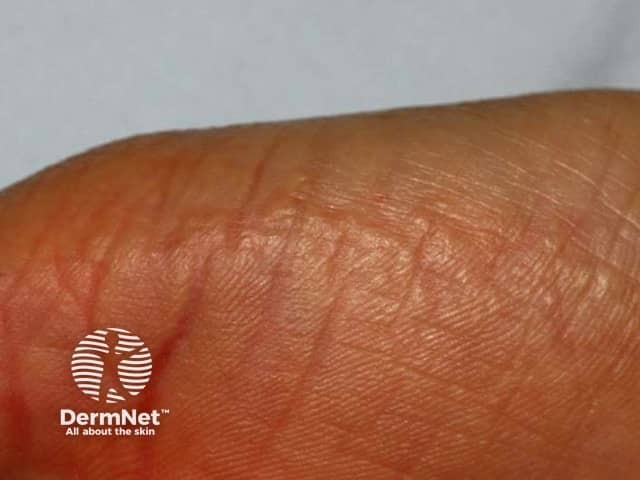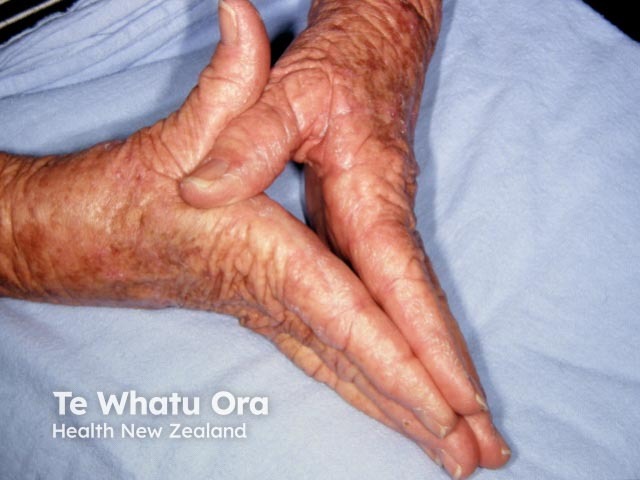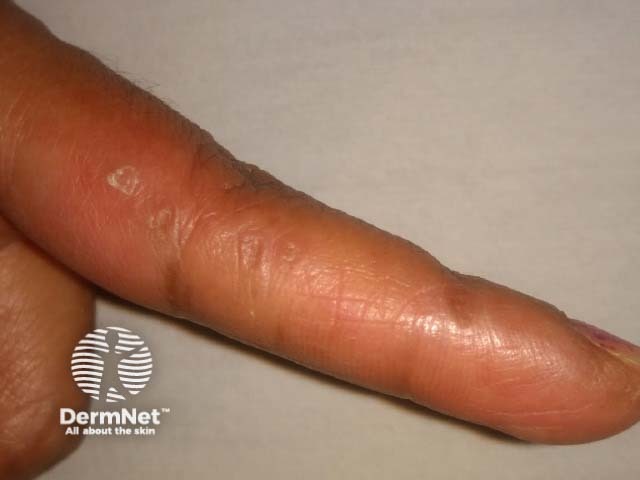Main menu
Common skin conditions

NEWS
Join DermNet PRO
Read more
Quick links
Author: DermNet Editor in Chief: Adjunct A/Professor Amanda Oakley, Dermatologist, Hamilton, New Zealand. Copy edited by Maria McGivern/Gus Mitchell. July 2018.
Marginal keratoderma is a form of papular palmoplantar keratoderma in which there are small firm warty or pearly papules on the sides of the hands and, in some cases, feet.

Probable acrokeratoelastoidosis

Keratoelastoidosis marginalis

Keratoelastoidosis marginalis
There are inherited and acquired forms of marginal keratoderma.
The inherited form of marginal keratoderma is acrokeratoelastoidosis, which was first described by Costa in 1953; hence, it is sometimes called Costa acrokeratoelastoidosis. It affects both hands and feet.
Focal acral keratosis is a variant of acrokeratoelastoidosis.
The acquired form of marginal keratoderma is often called keratoelastoidosis marginalis and is more common than acrokeratoelastoidosis.
Keratoelastoidosis marginalis is characterised by keratotic papules on the sides of the index fingers and thumbs in patients who have had a lot of exposure to the sun.
See the DermNet pages on acrokeratoelastoidosis and keratoelastoidosis marginalis.